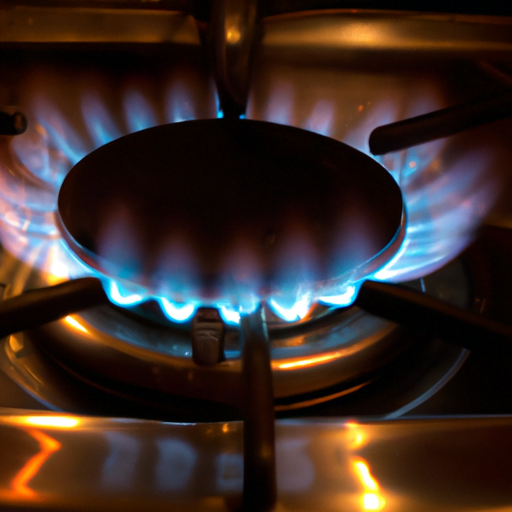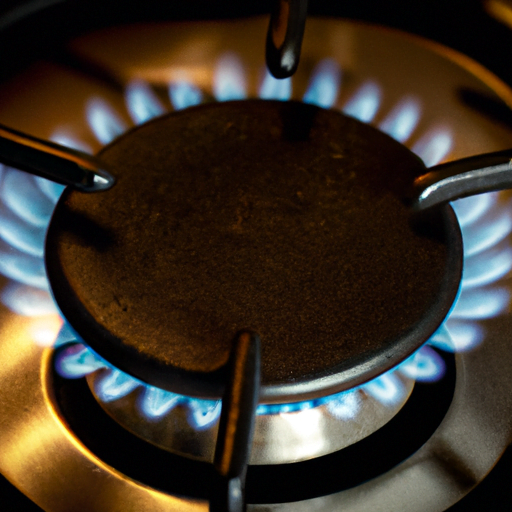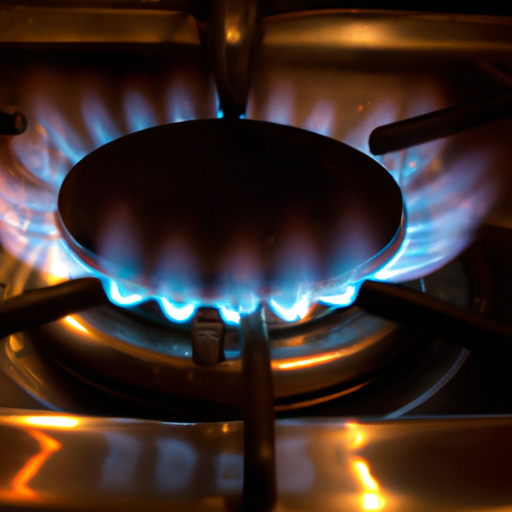So, you’re thinking of going off-grid and living a more self-sustainable lifestyle, huh? That’s pretty exciting! But before you dive headfirst into this adventurous endeavor, it’s important to consider the safety aspects. One particular concern that might come to mind is whether it’s safe to use butane indoors. Well, my friend, let me shed some light on this for you.
Butane, as you may know, is a highly flammable gas commonly used for various purposes such as camping stoves, portable heaters, and even cooking in some cases. When used properly and in well-ventilated areas, it can be relatively safe. However, things can take a dangerous turn if you misuse or mishandle it indoors. The primary risk associated with using butane indoors is the potential for fires or explosions due to the build-up of gas in enclosed spaces.
In order to ensure your safety, it’s crucial to follow some precautions when using butane indoors. Firstly, always make sure you have proper ventilation in the area where you’re using it, allowing fresh air to circulate and preventing the accumulation of gas. Additionally, keep flammable materials away from the butane source and never use it near open flames or sparks. As an added safety measure, consider investing in carbon monoxide detectors to alert you in case the gas reaches dangerous levels.
If you’re interested in learning more about butane safety, its uses, and other precautions you should take, keep reading our article to get all the information you need to safely use butane indoors. Trust me, being informed and taking necessary precautions is key to enjoying your off-grid living experience to the fullest while staying safe.

Introduction
Understanding the dangers of indoor butane usage
When it comes to living off the grid or in areas with limited access to electricity, finding alternative fuel sources becomes necessary. One commonly used fuel is butane. While it provides convenience and ease of use, it’s crucial to understand the potential risks associated with using butane indoors. This article will explore the properties and risks of butane, discuss safety measures, examine possible health effects, compare it to other common indoor fuels, delve into safe storage and handling, touch on legal considerations and regulations, highlight expert opinions and studies, examine real-life examples and incidents, and conclude by summarizing the safety considerations of using butane indoors.
Butane Properties and Risks
Exploring the nature of butane as a fuel
Butane is a highly flammable and colorless gas commonly used as a fuel in portable stoves, heaters, and lamps. It is affordable, readily available, and easy to use, making it popular for both outdoor and indoor applications. However, butane is denser than air, which means it can accumulate in poorly ventilated areas, increasing the risk of fire or explosion.
Identifying the potential hazards of butane indoors
Butane poses several potential hazards when used indoors. One significant risk is fire. As a highly flammable fuel, butane can ignite easily, especially when exposed to an open flame or sparks. Furthermore, butane can release carbon monoxide gas when burned incompletely, which can lead to carbon monoxide poisoning. Additionally, storing excessive amounts of butane can create a potential fire hazard.
Understanding the flammability and explosion risks
The flammability and explosion risks associated with butane are crucial to consider. Butane has a narrow flammability range, meaning it requires specific conditions to ignite. However, when the right conditions are met, such as a butane leak in an enclosed space with a source of ignition, a fire or explosion can occur. It is important to follow safety measures to minimize these risks.
Indoor Butane Usage Safety Measures
Proper ventilation guidelines for indoor butane usage
One of the most critical safety measures when using butane indoors is ensuring proper ventilation. Adequate airflow helps dissipate any leaking gases and prevents the accumulation of flammable gases. Ideally, windows should be opened, and fans should be utilized to create a constant flow of fresh air. Avoid using butane appliances in small, enclosed spaces, such as closets or bathrooms, without proper ventilation.
Safety precautions to follow while handling butane indoors
When handling butane indoors, there are several safety precautions that should be followed. First and foremost, ensure that all ignition sources are far away from the butane container. This includes avoiding smoking, using open flames, or operating electrical appliances nearby. It is also essential to handle butane containers with care, ensuring they are stored upright and kept away from heat sources. Never puncture or dispose of butane containers inappropriately.
Importance of installing and maintaining carbon monoxide detectors
Installing carbon monoxide detectors is crucial when using butane indoors. These detectors can alert you to the presence of carbon monoxide, which is odorless and colorless, at dangerous levels. It’s important to place carbon monoxide detectors near bedrooms and other areas where people spend a significant amount of time. Regular maintenance, including battery checks and replacement, is also necessary to ensure the detectors function properly.
Usage tips to minimize risks associated with butane
To minimize the risks associated with using butane indoors, it is essential to follow some usage tips. Firstly, always use butane appliances according to the manufacturer’s instructions. Avoid using them near flammable materials or in areas with poor ventilation. It’s also recommended to keep a fire extinguisher nearby, just in case of emergencies. Additionally, turn off butane appliances when not in use, and never leave them unattended.
Possible Health Effects of Indoor Butane Usage
Identifying the respiratory issues from prolonged butane exposure
Prolonged exposure to butane indoors can lead to various respiratory issues. Inhaling butane can irritate the respiratory system, causing coughing, wheezing, and shortness of breath. In severe cases, it may even lead to chemical pneumonitis, an inflammation of the lungs caused by chemical exposure. People with pre-existing respiratory conditions, such as asthma, may be more susceptible to these effects.
Understanding the risk of carbon monoxide poisoning
Carbon monoxide (CO) poisoning is a significant risk associated with butane usage indoors. Incomplete combustion of butane can release carbon monoxide gas, which is highly toxic. Breathing in high levels of carbon monoxide can lead to symptoms such as headaches, dizziness, nausea, confusion, and, in extreme cases, loss of consciousness or death. It’s crucial to have proper ventilation and carbon monoxide detectors to mitigate this risk.
Exploring the potential long-term health effects of butane usage
While acute exposure to butane may primarily result in immediate health effects, long-term exposure can have detrimental consequences. Chronic exposure to butane can lead to lung damage, respiratory issues, and even neurological problems. These long-term health effects emphasize the importance of using butane indoors safely and responsibly.
Discussion on the impacts of butane on indoor air quality
Using butane indoors can have a significant impact on indoor air quality. Incomplete combustion of butane can release not only carbon monoxide but also other pollutants, such as nitrogen dioxide and volatile organic compounds (VOCs). These pollutants can worsen indoor air quality, leading to respiratory issues and other health problems. Proper ventilation and regular air circulation can help maintain good indoor air quality when using butane.

Comparing Butane to Other Common Indoor Fuels
Analyzing the safety differences between butane and propane
Propane is another commonly used fuel for both indoor and outdoor applications. When comparing butane and propane, some safety differences arise. Propane has a lower flammability range compared to butane, making it slightly safer in terms of ignition risks. Propane also tends to emit less carbon monoxide when burned, reducing the risk of carbon monoxide poisoning. However, both fuels require similar safety precautions, such as proper ventilation and handling.
Identifying the risks associated with alternative indoor fuels
While butane and propane are two popular indoor fuel options, it is important to consider other alternatives and their associated risks. Alternative fuels, such as kerosene or ethanol, come with their own set of hazards. For example, kerosene can release toxic fumes and is more likely to cause fires. Ethanol, although less toxic, also has a narrow flammability range and should be handled with caution. Researching each fuel’s specific hazards and following appropriate safety measures is essential.
Safe Storage and Handling of Butane
Proper containers and storage methods for butane
Proper storage of butane is crucial to prevent accidents and ensure your safety. Butane should be stored in containers specifically designed for its storage, such as metal canisters or cartridges. These containers should be kept in a cool, dry place away from direct sunlight and heat sources. It is essential to avoid storing butane containers near open flames or ignition sources.
Safety precautions when transporting and handling butane containers
When transporting butane containers, it’s vital to adhere to safety precautions. Ensure that the container is tightly sealed and stored in an upright position to minimize the risk of leakage. Always handle butane containers with care, avoiding any rough or forceful handling that may cause damage or rupture. When transporting butane by vehicle, follow applicable regulations and guidelines.
Discussion on potential risks of storing excessive amounts of butane
Storing excessive amounts of butane can increase the risk of accidents and potential hazards. Having large quantities of flammable fuel increases the likelihood of accidental spills or leaks, creating the potential for fires or explosions. It is advisable to only store the necessary amount of butane needed for immediate use and follow appropriate storage guidelines.
Legal Considerations and Regulations
Exploring legal restrictions on indoor butane usage
Indoor butane usage may be subject to legal restrictions in certain jurisdictions. Some areas may prohibit the indoor use of flammable gases or require specific permits for their usage. It is essential to research and understand the applicable laws and regulations in your location to ensure compliance and prioritize safety.
Discussion on safety regulations and industry standards
Safety regulations and industry standards regarding indoor butane usage exist to protect consumers and emphasize safe practices. These regulations may include guidelines for proper ventilation, storage, and usage of butane. Adhering to these safety regulations and industry standards is crucial to maintain a safe environment when using butane indoors.
Understanding the consequences of violating indoor butane regulations
Violating indoor butane regulations can have severe consequences. Not only does it put your own safety and the safety of others at risk, but it can also result in legal ramifications. Fines, penalties, and even criminal charges may be imposed for violating regulations. It is important to prioritize safety and comply with all applicable regulations to avoid these consequences.
Expert Opinions and Studies
Highlights from studies on indoor butane usage safety
Various studies have been conducted to evaluate the safety of indoor butane usage. These studies have highlighted the importance of proper ventilation, storage, and handling practices to prevent hazards. They have also emphasized the risks associated with carbon monoxide poisoning and the negative impact on indoor air quality when using butane. Staying informed about the findings of these studies can help individuals make informed decisions regarding indoor butane usage.
Expert opinions on the risks and safety measures
Experts in the field of indoor fuel usage have provided valuable insights into the risks and safety measures associated with using butane indoors. They emphasize the need for proper ventilation, regular maintenance of appliances, and the installation of carbon monoxide detectors. Experts also stress the importance of following manufacturer guidelines and industry standards to ensure safe usage.
Discussion on current research and advancements in indoor butane safety
Advancements in indoor butane safety continue to be a topic of ongoing research. Researchers are exploring new technologies and materials to enhance the safety of butane appliances and address potential risks. Ongoing research and advancements help inform safety guidelines and promote the development of safer butane products.
Real-Life Examples and Incidents
Case studies showcasing the dangers of indoor butane usage
Several real-life examples and incidents highlight the dangers associated with indoor butane usage. These include fires and explosions caused by leaks or improper usage of butane appliances. These case studies emphasize the importance of following safety measures and utilizing best practices to prevent accidents and protect lives.
Analysis of butane-related accidents and their causes
Analyzing butane-related accidents helps identify common causes and lessons learned. Accidents can often be attributed to factors such as improper storage, lack of ventilation, or mishandling of butane containers. By understanding the causes of these accidents, individuals can take proactive steps to prevent similar incidents from occurring.
Conclusion
Summarizing the safety considerations of using butane indoors
In conclusion, using butane indoors poses several potential risks and hazards. It is essential to understand the flammability and explosion risks associated with butane and to take proper safety measures when handling and using butane appliances. Adequate ventilation, installation of carbon monoxide detectors, and following manufacturer guidelines are crucial for minimizing the risks of fires, explosions, and health issues.
Reiterating the importance of following safety guidelines
To ensure your safety and the safety of others, it is crucial to follow safety guidelines when using butane indoors. These guidelines include proper ventilation, careful handling of butane containers, installation of carbon monoxide detectors, and adhering to manufacturer instructions. By prioritizing safety and being aware of the potential risks, you can significantly reduce the likelihood of accidents and health issues related to butane usage.
Encouraging awareness to prevent potential accidents and health risks
Ultimately, raising awareness about the potential dangers of using butane indoors is essential in preventing accidents and health risks. By educating individuals about the properties and risks associated with butane, as well as promoting the adoption of proper safety practices, we can create a safer environment for everyone. It is crucial to stay informed, maintain vigilance, and prioritize safety when using butane indoors.




